In 1880 an advertising card titled “The Magical Eggs” was marketed in New York by Wemple & Company. (1) The pieces can be rearranged in a rectangle so that 8, 9, or 10 eggs appear.
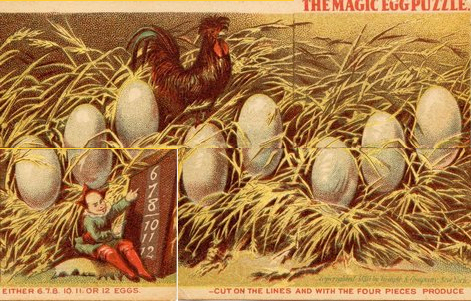
8 eggs
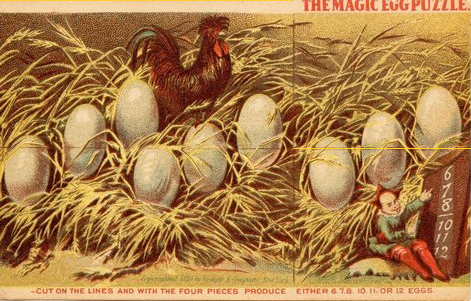
9 eggs
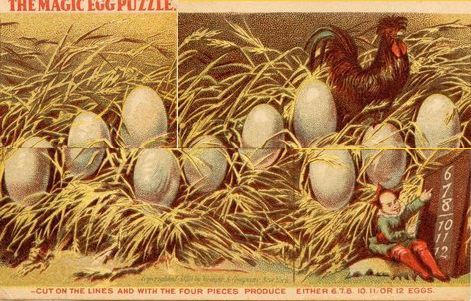
...or 10 eggs?
The most famous version is “Get off the Earth” by Sam Loyd (1841-1911), created (and patented) in 1896 as an ad for Bergen Beach Playground in New Jersey.
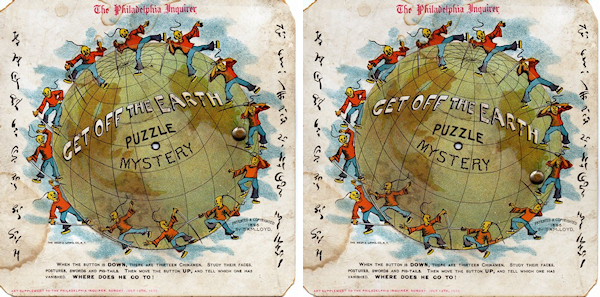
13 or 12 Chinamen?
Sam Loyd’s “Teddy and the Lion” (1909) is more elaborate: here, a man turns into a lion. The “Teddy” in the title refers to Theodore Roosvelt, who went to Africa on a safari in 1909.
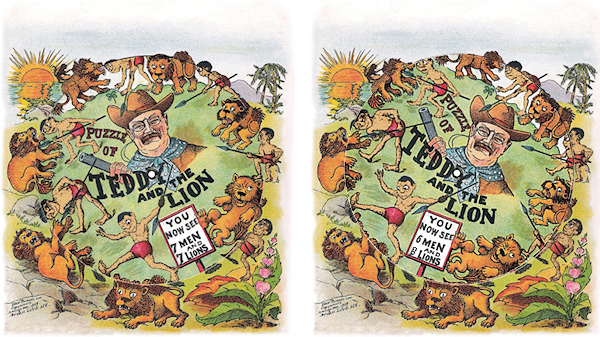
7 men and 7 lions or 6 men and 8 lions?
Another beautiful creation by Sam Loyd, involving boys on a bicycle wheel (2) :

12 or 13 boys?
This version was copyrighted in 1907 by Theodore L. DeLand jr. (3) :
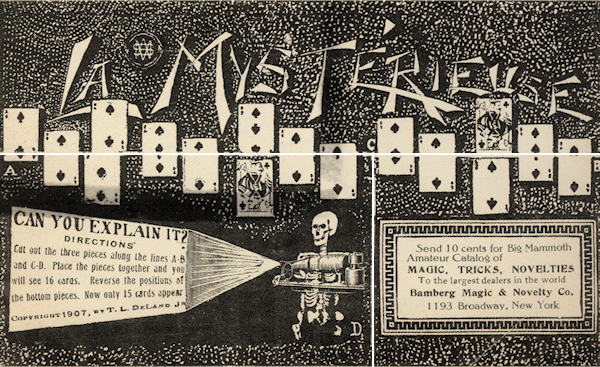
16 cards
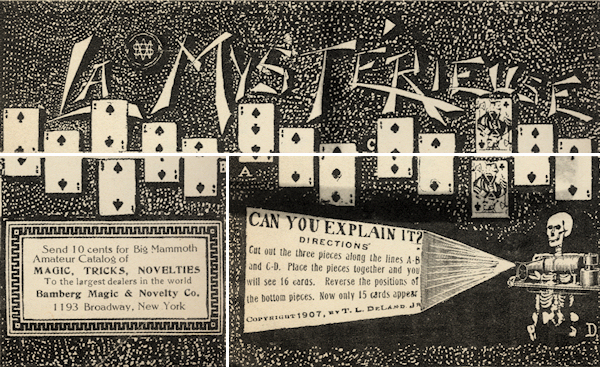
...or 15 cards?
DeLand’s picture was published in 1945 in The Conjurors’ Magazine (4) and was the inspiration for this (very similar) advertisement by Christopher H. Charlton (1883-1963):
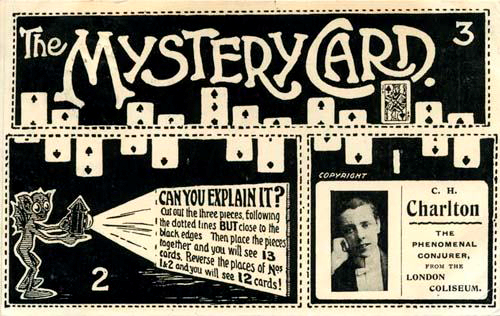
In 1914, Sam Loyd published in Cyclopedia of 5000 Puzzles, Tricks, and Conundrums a puzzle titled “Sailing Under False Colors”. (5) The goal was to cut an American flag in two pieces like a jigsaw puzzle and rearrange them to change the fifteen stripes into thirteen:

Here the solution:

This beautiful German vanishing puzzle is not dated:

14 girls

...or 15 girls?
In 1951 Mel Stover (1912-1999) worked on the idea behind “Teddy and the Lion” with a minimal approach, creating this version of a colour changing pencil (6) :
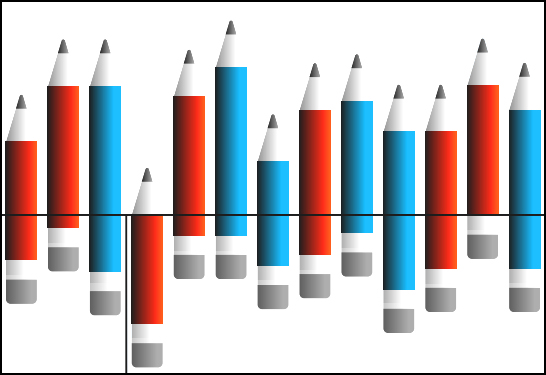
7 red + 6 blue
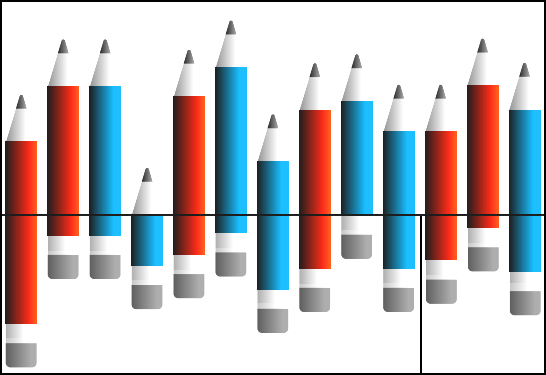
...or 6 red + 7 blue?
One of the most skillfully drawn version is the one designed in 1968 by Pat Patterson Lyons and marketed by W. A. Elliott as “The Vanishing Leprechaun” (7) :

15 leprechauns

...or 14 leprechauns?
In 1988 Shigeo Takagi created a version of the puzzle involving an increasing number of candles (8) :
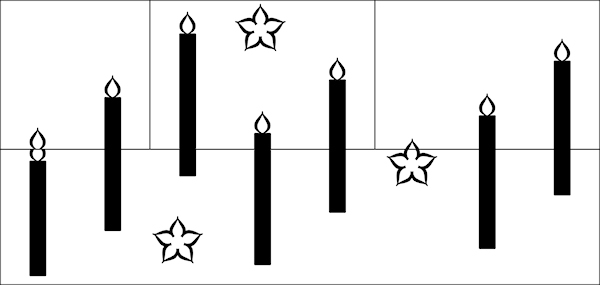
7 candles
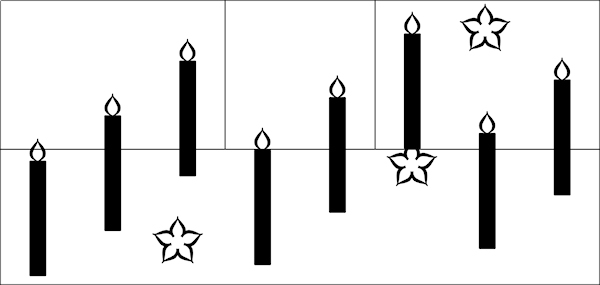
...8 candles
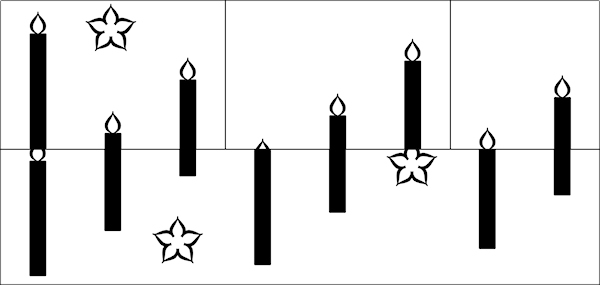
...or 9 candles?
In 1999 Mark Setteducati created a version involving 5 or 6 magicians (play it online).
In 2000 Masao Atsukawa marketed “Warp 9”, a jigsaw puzzle made of 6 pieces, apparently involving a quadridimentional warp of one piece (9) :
A number of stunning creations can be found at Archimedes’ Lab website.
1. Martin Gardner, Wheels, Life, and Other Mathematical Amusements, W.H. Freeman and Company, 1983, page 129.
2. Image courtesy The Lilly Library, Indiana University, Bloomington, Indiana. See also this.
3. Martin Gardner, Mathematics, Magic and Mystery, Dover, New York 1956, pages 123-124.
4. The Conjurors’ Magazine, November 1945, p. 38.
5. Sam Loyd, Cyclopedia of 5000 Puzzles, Tricks, and Conundrums, Pinnacle Books, 1914, page 231.
6. Mel Stover’s geometrical vanishes are briefly described by Martin Gardner in David Wolfe and Tom Rodgers (ed.), Puzzlers tribute: a feast for the mind, A. K. Peters 2002, page 29.
7. W. A. Elliott “The Vanishing Dollar Forty-Nine”, Ibidem 34/35 (August 1969), now in Volume 3, page 850.
8. Richard Kaufman, Genii, March 1988, pages 632-633.
9. “Warp 9”, Genii, May 2000, pages 43-44.
BY-NC-SA 4.0 • Attribution-NonCommercial-ShareAlike 4.0 International